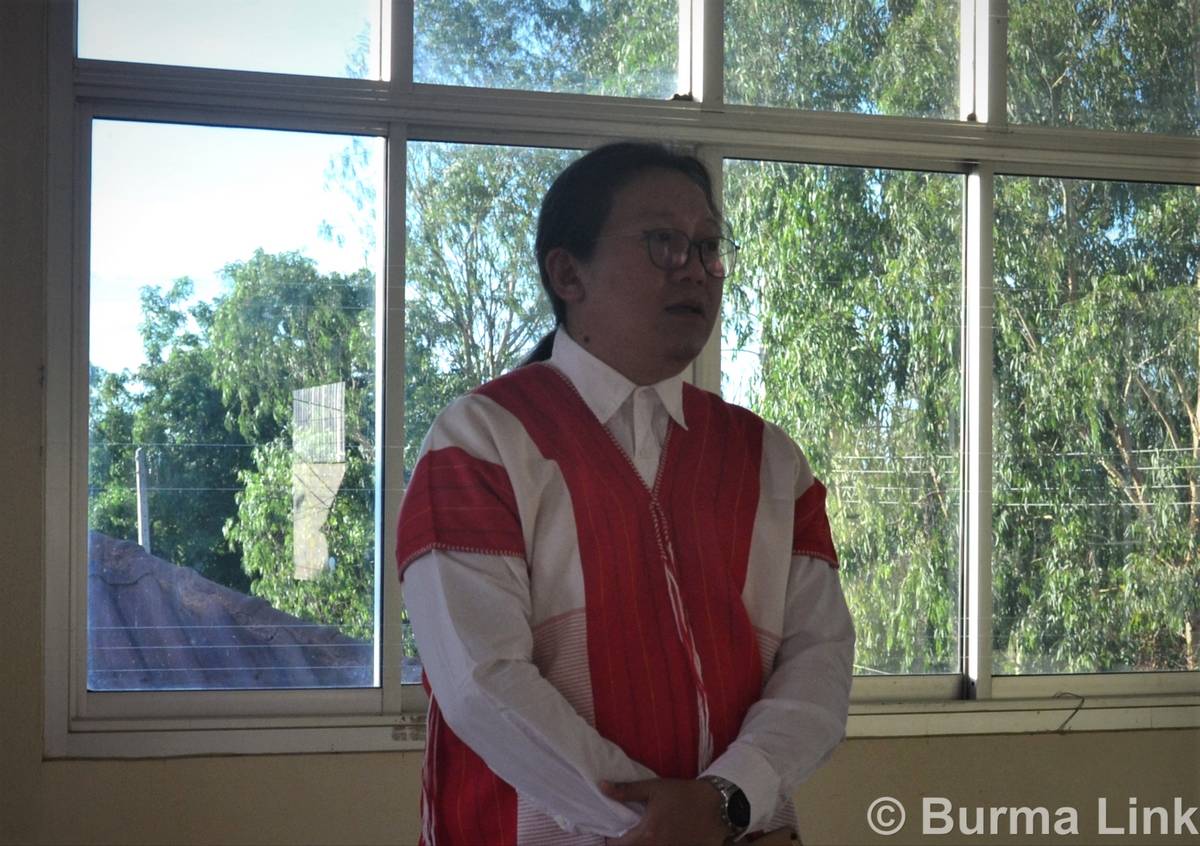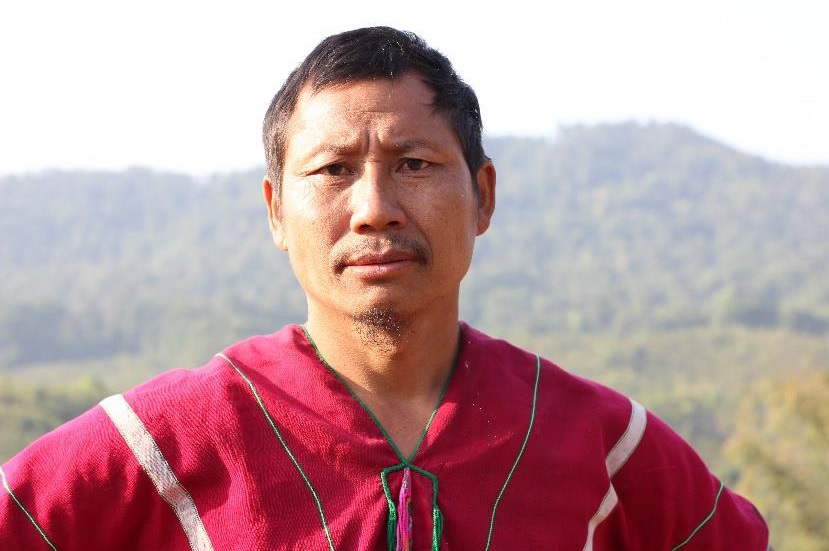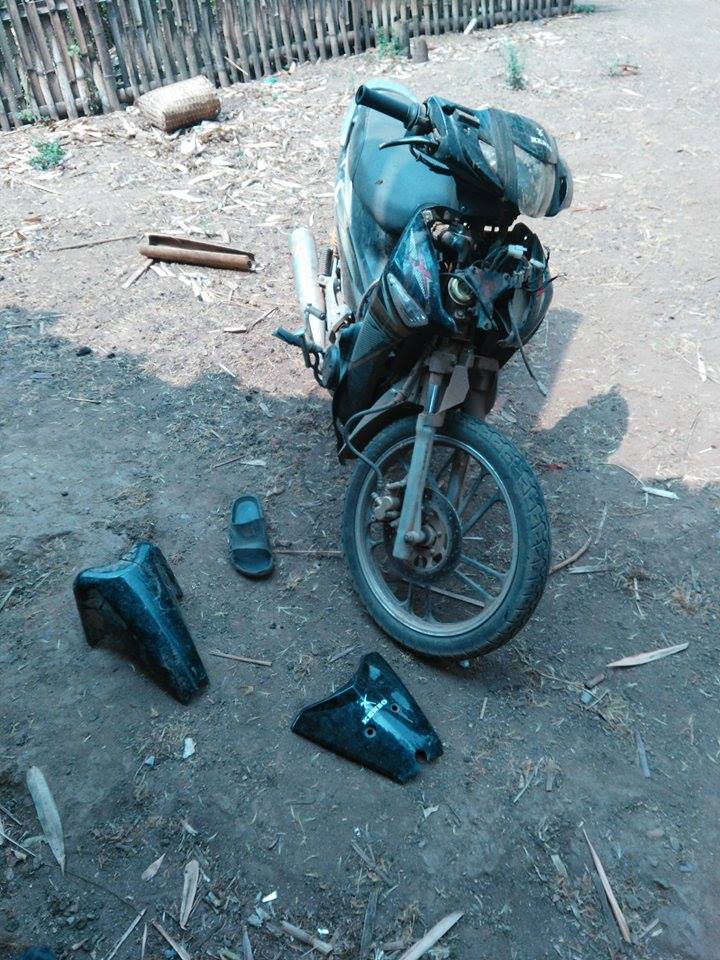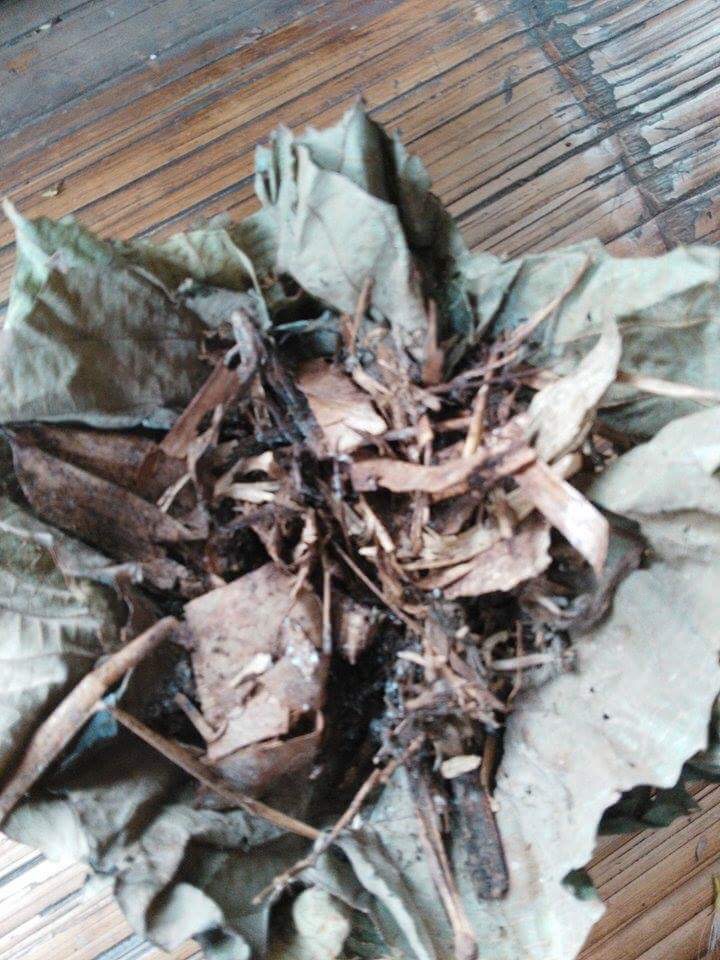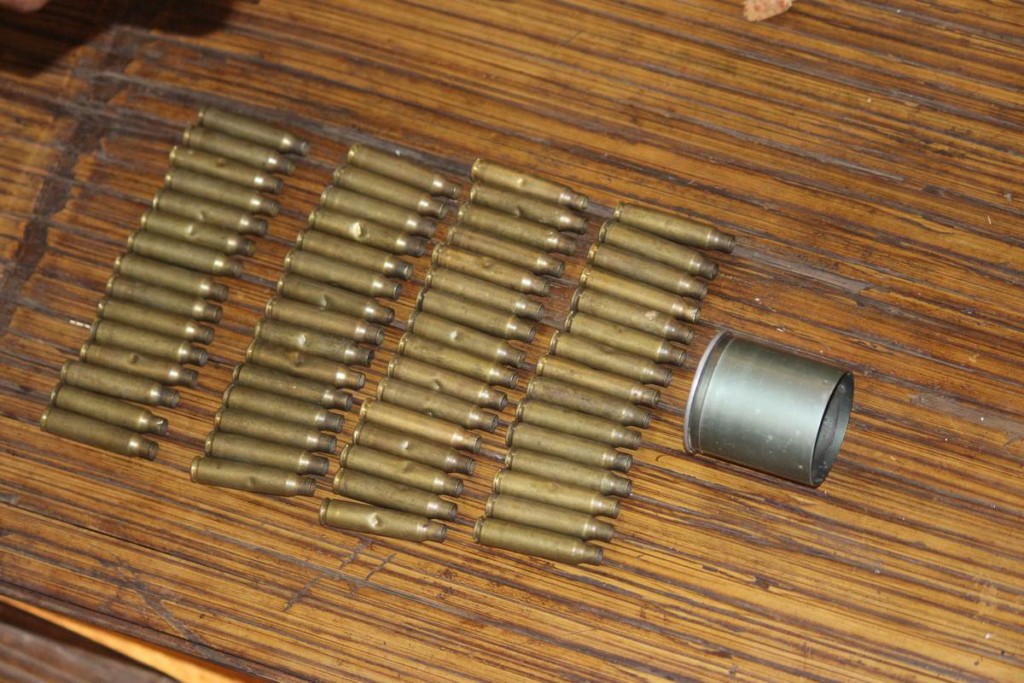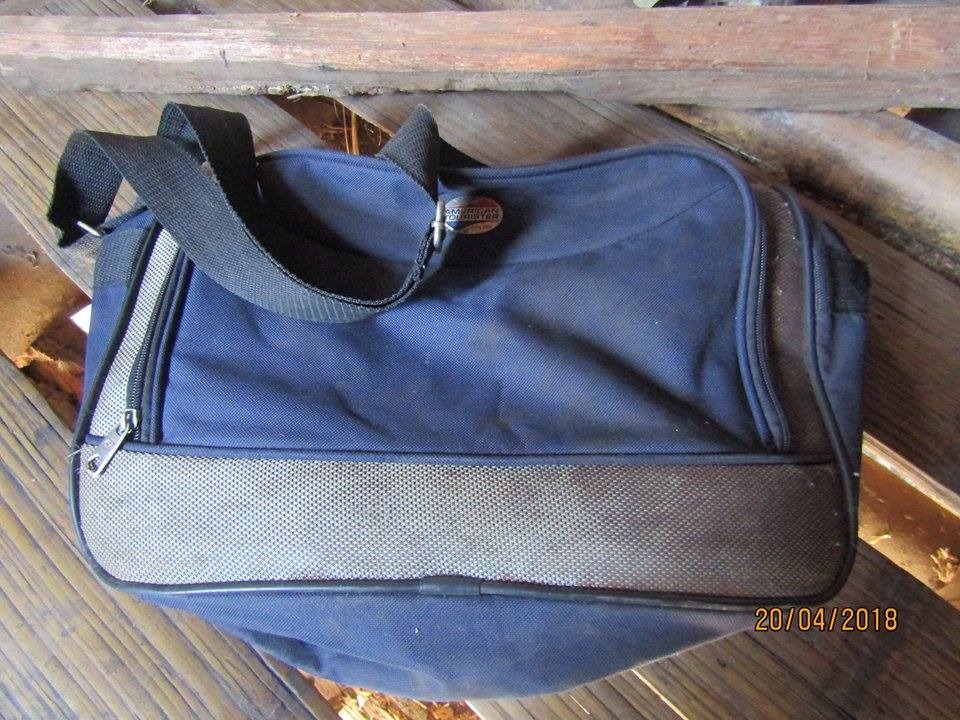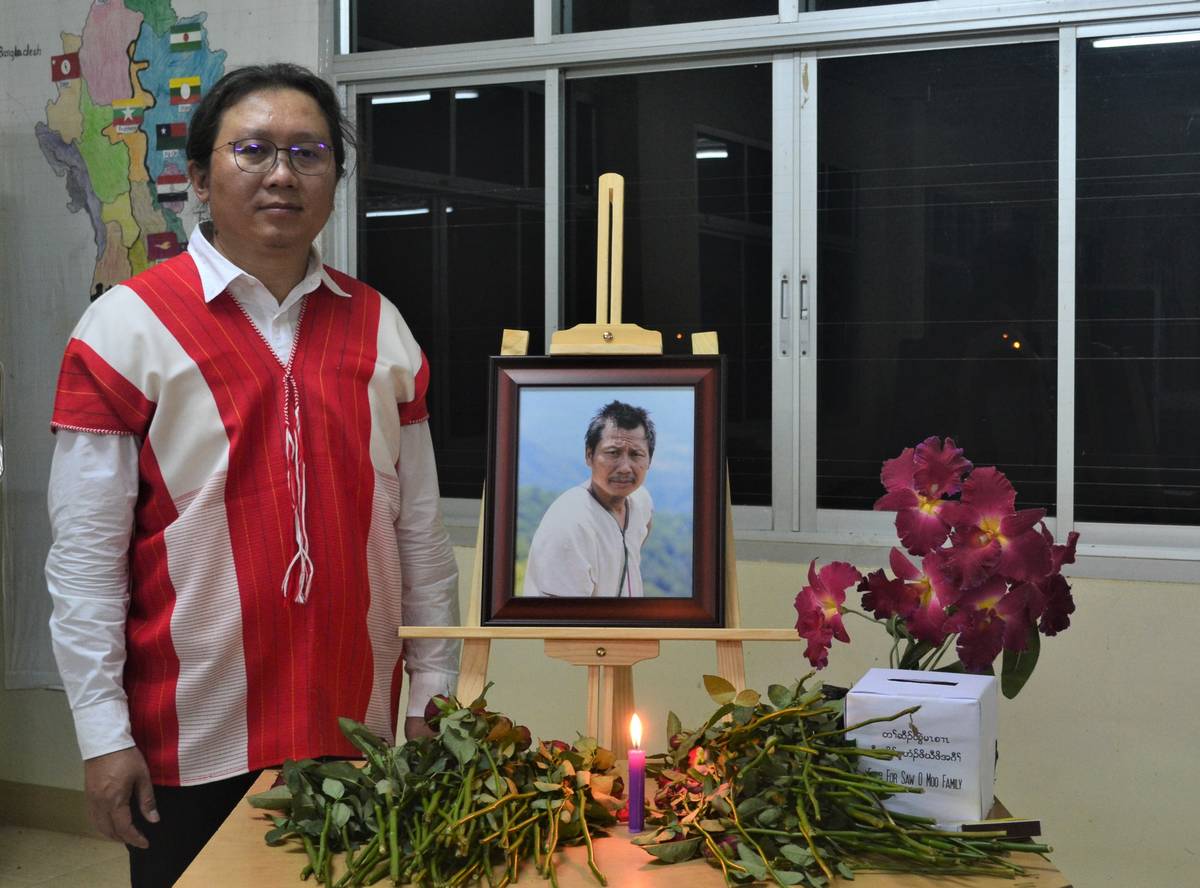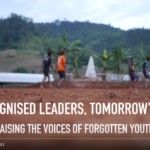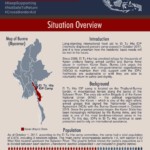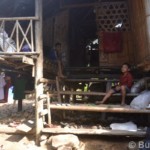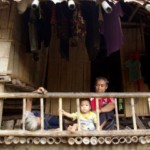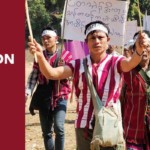Burma Link | May 28, 2018
Paul Sein Twa is the Executive Director of the Karen Environmental and Social Action Network (KESAN), a community based non-profit organisation that works to improve livelihood security and to gain respect for indigenous people’s knowledge and rights in Karen State. KESAN carries out capacity building and facilitates dialogue to mobilise and empower local communities, leaders, organisations and policy makers who can then make better-informed development decisions. This interview with Paul Sein Twa was conducted on May 5, 2018, at the one-month death commemoration held on the Thailand-Burma border in memory of Saw O Moo, one of the most active Karen community leaders who was shot dead by the Burma Army in northern Karen State’s Mutraw (Papun) District on April 5, 2018. Since the beginning of March this year, the situation in Mutraw District has deteriorated after Burma Army started deploying troops and crossed into the territory of the Karen National Liberation Army (KNLA) in an effort to build a strategic military road. This has resulted in continued armed conflict between the Burma Army and the KNLA – both signatories to the ‘Nationwide’ Ceasefire Agreement (NCA). The Karen National Union (KNU) has accused the Burma Army of violating the terms of the agreement by moving past a demarcation line that was designated in the NCA, their claims backed up by findings by the Karen civil society. In the recent report “The Nightmare Returns: Karen hopes for peace and stability dashed by Burma Army’s actions,” the Karen Peace Support Network (KPSN) documents how the Burma Army has repeatedly breached both the 2012 preliminary bilateral ceasefire and the 2015 NCA in the area, the Burma Army “again taking advantage of the ceasefire to accomplish what it was unable to do during earlier periods of widespread armed conflict: expand and upgrade its military infrastructure and capability to cease and control Indigenous Karen people’s lands.” Burma Army soldiers have been indiscriminately shelling and shooting towards Karen civilians, and since March 4, at least 2,400 civilians have fled the area and are hiding in the forest. Saw O Moo’s wife and children were among those who fled to the jungle on March 4, while Saw O Moo chose to stay behind to coordinate aid and defend villagers against further Burma Army attacks. Tragically, he was ambushed and shot dead by the Burma Army while on his way home from a community meeting. To this day, Burma Army has not disclosed the location of his body, leaving Saw O Moo’s family unable to perform their Indigenous funeral rites. Whilst the Burma Army agreed for a “temporary postponement” of the road construction in a meeting with the KNU on May 17, it remains to be seen if the Burma Army will abide by the agreement and if their troops will return to their original posts as demanded by the KNU.
In this interview, Pau Sein Twa opens up about the life and tragic loss of his beloved colleague and discusses the current situation in Mutraw District, including the need for continued support for displaced ethnic populations from the international community. The message Paul Sein Twa wants to emphasise is simple; Karen people want peace and they want Burma Army to leave their ancestral lands. The interview is edited for clarity and to include background information particularly with regards to the conflict and displacement situation in northern Karen State.
Saw O Moo, Indigenous Karen leader, peace and environmental campaigner: “He committed his entire life doing this kind of work”
About Saw O Moo (from KESAN’s Tribute to Saw O Moo): Saw O Moo was born in 1975 in his parents’ hut on their land in T’Ri Plaw, in the Ler Mu Plaw area. Since 2006, he worked as a local community partner with KESAN. Saw O Moo will be remembered for his life-long passion and commitment to preserving Indigenous Karen cultural traditions, promoting customary land stewardship, and leading local community forest conservation activities. Saw O Moo worked tirelessly to protect some of the last intact old-growth forest and endangered species habitat remaining in Burma, and he was also one of the most active local community leaders in the Salween Peace Park, a grassroots initiative to create an Indigenous Karen reserve in Mutraw District. On April 5, 2018, Saw O Moo was shot and killed by the Burma Army while he was on his way home from a community meeting to organise aid for the newly displaced civilians. Saw O Moo was survived by his wife Naw Paw Tha and 7 young children. KESAN has set up a page to support Saw O Moo’s family.
For KESAN staff and all Indigenous Karen people of Mutraw, Saw O Moo’s death is an unspeakable tragedy. We will never forget his dedication in the ongoing struggle to build peace and protect ancestral lands. We also condemn the brutal actions of the Burma Army and its disregard for local villagers’ lives. This tragedy could have been avoided if the Burma Army had not broken the NCA and refused to resolve the rising tensions through the existing dispute resolution mechanisms.
– KESAN, in the Tribute to Saw O Moo
He committed his entire life doing this kind of work and as you can see, we have a forest which is managed by local communities and is among the best forests of all. It can be a case study for other communities that want to do conservation and forest management. He was also the one who was always very persistent. When he thought, “This is right, this is good,” he would do it and you could not stop him. Towards the end of his life we had been developing the initiative for the Salween Peace Park, which is an inclusive landscape conservation approach that covers the territory of many indigenous people.
The Salween Peace Park Project is a bottom-up initiative that envisions to create a 5,400-square-kilometer large, indigenous Karen led sanctuary to promote environmental protection, wildlife conservation, cultural preservation, and peace. Parts of the project have been in jeopardy since the Burma Army started deploying troops in northern Karen State.
We have been working on the [Salween Peace Park] project for two to three years, doing consultations, trying to build understanding and awareness, and trying to get support. We are in the final stage where we collect signatures from the communities living in the peace park area to approve the draft charter and the governance structure, because we need to develop a governance structure that comes from community representatives. In December last year [2017], when we held the consultations, we made the decision that by the beginning of this year we would start collecting signatures from all the 26 village tracts, more than 300 villages. Then in early March, the fighting started. The [Burma] army moved in and brought more troops. He [Saw O Moo] was so worried that this initiative would be affected, and he thought that we couldn’t do it anymore in the area where the troops moved in. He was moving around, and he was monitoring the IDP (Internally Displaced Person) situation and trying to give information and communicate with us so that we could help support the [displaced] communities. The fact is that we don’t want the military road, we don’t want the [Burma] army to come in and disturb us. We want them to leave us alone, and we want to live in peace. We want to keep doing these activities that we have been doing.
Whenever Saw O Moo called me, I said, “Take care of your security,” and he said, “No, I have to do this because if I stay with my family in the jungle, I cannot look after other people.” I didn’t want to hear the news [about his death] and when I heard it, I was completely devastated. I didn’t know what to do. He had sent me a message on the 4th [one day before he was killed], but when I was at the border area I didn’t have access to internet or phone. When I came back from the border I met with my friend and he said that Saw O Moo had disappeared.
Background of Saw O Moo’s death: “They never thought that the Burmese Army would come to that area”
April 5th was the day when I know that he came to Luthaw Paw Day, where they [the villagers] had built their community center. Saw O Moo also was a member of a community-based organisation (CBO) called Luthaw Paw Day. Luthaw Paw Day is a village cluster organization that has received support from our KESAN’s community-based livelihoods initiative. As a village cluster organization, Luthaw Paw Day manages community projects which we support in its village cluster area. KESAN provides capacity building to Luthaw Paw Day so that it can manage its own local development activities. It also helps identify and prioritize local needs and distribute project supports equally to all villages in its clustered area.
When the fighting started, the community people fled all over the area. I suggested Luthaw Paw Day committee chair to find a time to meet with project committee members, for example, the rice bank project. The rice bank project has already gathered a lot of rice, so when people need rice they can borrow it and then return it. So, they could discuss how to manage this kind of project during this time of new displacement. Some rice banks might be affected and some might remain safe. Maybe they should support the IDPs? They have to make a decision on this. So, I encouraged them to call a meeting, but Saw O Moo was living in another community. Not very far, but it was at least one to two hours walk from his village to the Luthaw Paw Day community center.
I know that he came to the meeting on the 5th. The meeting finished in the afternoon and he wanted to go back to his village. His colleagues warned him to be very careful because the road was not secure. That day, they had heard news that Burma Army had been shooting at villagers’ motorbikes in two separate places, but that road [where the villagers were shot at] is a little bit distant from this road [where Saw O Moo was killed]. Local people would normally think that the Burmese Army would not come to that area. That’s why he said, “Okay, maybe I can go back.”
Saw O Moo was shot dead on April 5 by Burma Army soldiers when he was on his way home from the meeting in Luthaw Paw Day. Traveling home, Saw O Moo gave a lift to a KNLA soldier who managed to escape the shooting. The Burma Army released a statement on April 9, denying any wrongdoing in the case and claiming that Saw O Moo was a plainclothes KNLA fighter. Despite repeated efforts by the family, the local villagers and the KNU, the Burma Army has not disclosed the location of Saw O Moo’s body. As a result, his family has not been able to fully perform their Indigenous funeral rites.
He was on his motorbike and, according to the information we were given, he also carried a KNLA soldier. The KNLA Headquarters later confirmed that 4 RPG-7’s grenades and 6 boosters seized by the Burmese Army belonged to its soldier. But that road is a regular road and one that the KNLA uses, it is not a Burmese Army way. The Burmese Army road is more than a kilometre away. According to the soldier that I spoke to, who rode with him, when they approached that area he saw the Burmese Army waiting there, and he shouted, “Burmese Army! Burmese Army!” and he jumped off the bike and ran. But as the driver, you cannot stop immediately and run. He [the KNLA soldier] said that the motorbike continued to drive maybe a few meters and then he heard the gunshots. Nobody saw him [Saw O Moo] after that. They [his relatives, local villagers and the KNU] collected evidence because we still haven’t seen his body.
Photos from left to right, top to bottom: The above photos show Saw O Moo’s motorbike, blood-stained leaves collected at the site of the killing, bullet shells (60 rounds and one M79 shell) collected at the site of the killing, and Saw O Moo’s bag, which the BA returned empty. Photos: KESAN.
The Burma Army made a propaganda statement on the 9th. He [Saw O Moo] was killed on the 5th, and on the 9th their [Burma Army] main online office released a statement saying that they shot at two plainclothes warriors or fighters, because these two men travelled on a Burma Army road and were trying to set up landmines or an attack or something like that. They [Burma Army] were trying to make an accusation like that, but in our [KPSN] report, we showed clearly that the place where they shot him is very far from the Burma Army road. It is a regular motorbike road made by the local communities. No KNLA soldier would go and attack the Burmese Army on a motorbike.
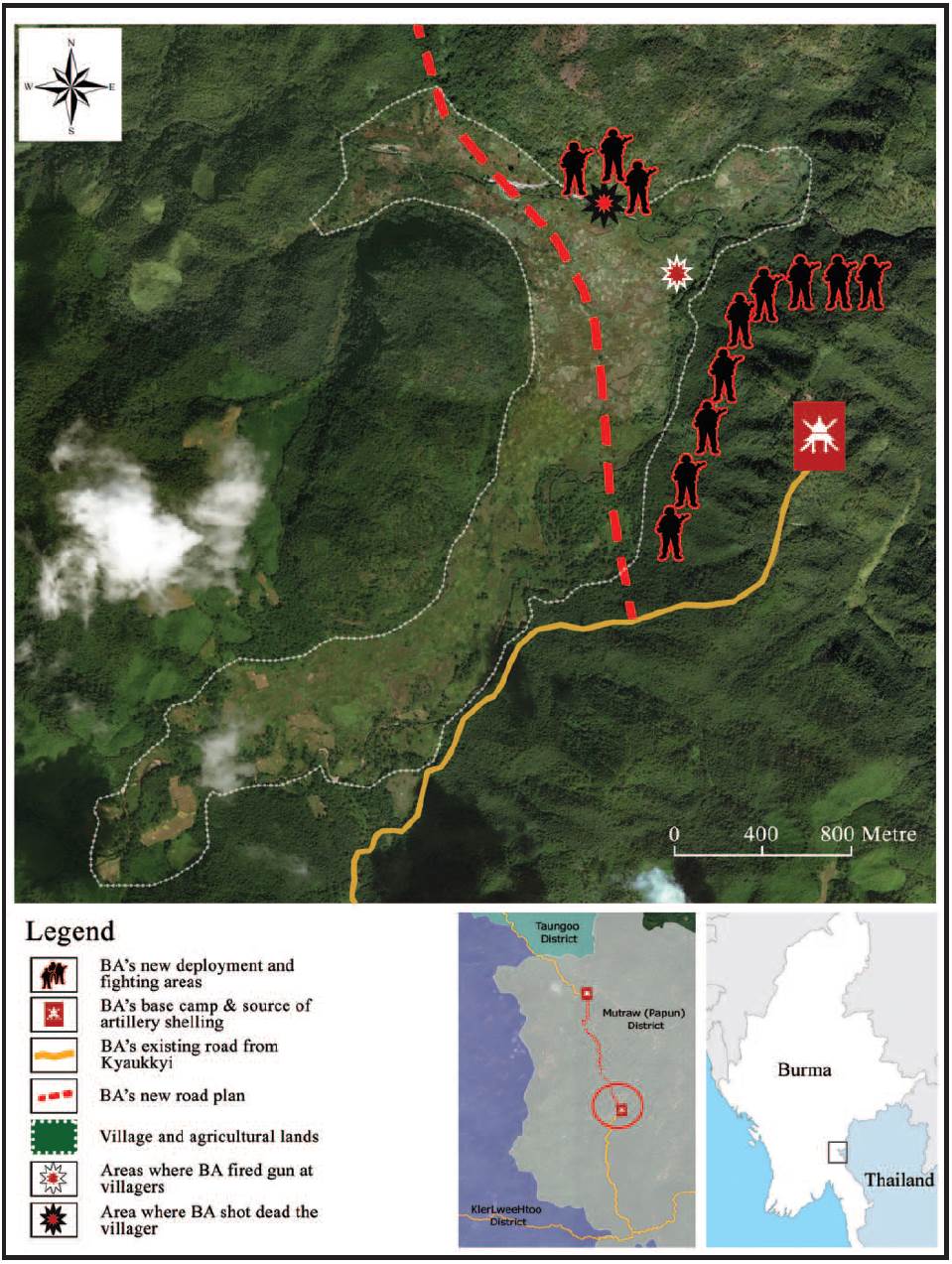
This map shows Burma Army’s new troop deployment, the areas where Burma Army shot at villagers and where they shot dead Saw O Moo. Map by: KPSN in the report “Nightmare Returns” p. 7.
Justice for Saw O Moo’s killing: “At least the government or the [Burma] army should commit to not do this again to Karen or to other ethnic groups.”
Right now, we have little hope for that [justice]. Because when we talk about justice, in the end, we want to hold the perpetrators, the soldiers that killed him, accountable and give them punishment. But it is difficult. That is why the family said they know that they [Burma Army] often kill people like that [extrajudicial killing], so they are just asking the Burma Army to leave their area, so that they can come back and live in peace in their village. And they say not to disturb or kill the villagers again. It’s only that kind of simple demand [from the family]. But for us, defenders of human rights, we want justice. The Burma Army killed him – at least the government or the [Burma] army should commit to not do this again to Karen or to other ethnic groups. Even if they suspected Saw O Moo or others to be rebels or whatever, they could arrest them, charge them, and provide a fair trial. I am not a professional soldier but to arrest someone on the road, just put a roadblock of wood or something on the road. Then the motorbike will stop, and you can catch them. I mean it is very simple if you want to arrest somebody, but they [Burma Army] just shoot people like that.
In all these areas they have the policy to shoot on sight, to shoot at point blank. So, whenever people see the Burmese Army, they run away. This is the 30-40 year long experience of local villagers. It’s always like that.
Retrieving the body: “We worry that he might not have died instantly but he was tortured to death, or something like that, because when you see the body, you will know”
After the shooting, his [Saw O Moo’s] younger brother went to the site, but he couldn’t approach it because the Burmese Army was still there. About a week or ten days later they tried again and could access to the murdered scene because the Burmese Army had moved up to higher ground, so they went there [the site of the killing].
Also, the Burmese Army had dropped a letter on the road, where they also gave a phone number, so they [villagers and KNLA] called and asked about the body. [The person who answered said] “We buried him there [undisclosed location], but we also set up landmines.” And then the KNLA and the villagers said, “No worries with landmines, tell us where you buried him,” or “where you keep his body.” And then they went and searched, but they didn’t find anything. They saw the track where they [Burma Army] dragged him [Saw O Moo], so maybe they might have buried him near the army camp there [Ler Mu Plaw] and they’re trying to use his body as a pawn to negotiate with the KNU. Still until now we don’t know [the location of the body]. Some of my colleagues talked to the central KNLA leaders and asked, “Can you help to negotiate with the Burmese army to get back the body or to show where they buried him?” And the KNLA leaders said, “We are trying, but until now still nothing happened.”
They called the phone number that they [Burma Army] gave and asked for the properties that he [Saw O Moo] had in his bag like a video camera, a recorder and a telephone and couple of other things, maybe his notebook. And the guy on the phone said, “If you want it, you can go and get it from Naypyidaw.” They [Burma Army] sent all his things there.
We want the KNU to really bring this case to the top leaders, to the table. At least if the government and the KNU said they want to continue with the peace process, this case, killing of Saw O Moo, should not be too difficult to resolve. At least they can find a solution to this. One [important] thing is to get the body back. We don’t know whether he died instantly there or not. We worry that he might not have died instantly but he was tortured to death or something like that, because when you see the body, you will know. We know that the KNU tried to meet the JMC (Joint Monitoring Committee) and talk with the JMC and they also wanted to have a meeting between the army from both sides, but it didn’t happen as scheduled. I think the chance for the KNU to meet and talk with the Burma Army about this case is very small because there is no space. As we know, this peace process has been stalled.
Since this interview was conducted, the Burma Army commander-in-chief Senior General Min Aung Hlaing met a KNU delegation on May 17, 2018, to discuss and resolve the current conflict. Whilst the Burma Army agreed for a “temporary postponement” of the road construction, it remains to be seen whether they will respect this agreement and return to their original posts as demanded by the KNU. Saw O Moo’s killing was reportedly not discussed in the meeting.
Burma Army attacking and trapping civilians: “We wanted to see stronger and more powerful statements [from the international community], really acknowledge the atrocities that are happening”
It is also difficult to turn to the international community. The international community just only released a very soft statement like, “We call all parties to stop fighting.” I mean it is not like the KNU goes and shoots and kills the Burmese Army. The Burmese Army are attacking; they are expanding their territory and their control during the ceasefire time.
The KNU [KNLA 5th Brigade] had given them [Burma Army] the protocol that they are only allowed to travel on their road and stay in their camps [as part of the ceasefire agreements]. So, there is this kind of measurement of 50 yards from both sides. When they [Burma Army] came a kilometre away from the permitted area the KNU of course shot at them as a warning. It was only a small shooting, but suddenly they [Burma Army] shelled mortars from their bases, because they have artillery there. They shelled mortars into the field, the area where they assumed the KNLA soldiers were hiding, and they fell very near to our colleagues. They [Burma Army] are supposed to be only near their camp and if they travel they should only travel [on the old road as agreed with the KNU]. People were attacked in this area, and they were shelling [indiscriminately], and Saw O Moo was killed here. When my colleague Ma Bu [close friend of Saw O Moo] organised the first-day funeral [without his remains], the Burmese army came very close and they had to run away on the second day [after the killing].
At least they [international community] can be very open and strong about their stance toward the government and the Burma Army – what they [Burma Army] are doing is not correct, it is wrong. For the sake of building peace, these things should not happen and must not happen at all. I think at least we want them [international community] to say the truth. But as I said, their statements are very soft, as we saw in the US embassy statement. They are very, very soft, and we wanted to see stronger and more powerful statements, really acknowledging the atrocities that are happening.
The US embassy statement reads; “The U.S. Embassy is deeply concerned about intensified fighting in Kachin State, which has forced thousands of people to flee their homes. We are also deeply troubled by recent fighting in Shan State and Kayin [Karen] State that has also displaced thousands of people. We urge all parties to cease fighting [bold added]. We call upon the government, including the military, to protect civilian populations and allow humanitarian assistance to be delivered to those affected by the conflicts.”
The Delegation of the European Union to Myanmar [Burma] also released a statement on May 16 (after this interview had been conducted), which followed similar wording to the US embassy statement above. An excerpt reads; “As a formal international witness to the Nationwide Ceasefire Agreement (NCA), the European Union emphasises the need for all parties to the conflict to immediately cease hostilities and offensive combat operations [bold added] in order to protect civilians.”
These statements imply that the conflict is balanced and fails to acknowledge that the ethnic armies and civilians are under attack by the Burma Army. The KPSN’s findings show that in the Karen State’s Mutraw District, Burma Army has repeatedly breached the terms of both the 2012 and 2015 ceasefires, taking advantage of the ceasefire to expand and upgrade its military infrastructure and capability to seize and control Indigenous Karen people’s lands. The Burma Army’s actions undermine local people’s efforts to build genuine lasting peace, protect their natural and cultural heritage, and facilitate the return of refugees and IDPs to their ancestral lands. In a recent statement published on May 17, the KPSN strongly condemns the Burma Army’s ongoing, widespread military offensives in Karen as well as Kachin and Shan States, that have resulted in large-scale forced displacements, extrajudicial killings, rape, and torture of civilians. In a similar vein, other ethnic organisations such as the Ethnic Nationalities Affairs Centre (ENAC) have urged Burma Army to stop its offensives in Kachin State as well as in other parts of the country. According to ENAC’s briefing, recent Burma Army offensives in Kachin State – including aerial bombings – have newly displaced over 5,000 civilians (total more than 155,000 IDPs in Kachin), majority of whom are trapped in the war zone. Burma Army has blocked aid to the IDPs, and thousands of Kachin have been protesting to free the IDPs in demonstrations that the government has violently cracked down on. Apart from statements such as the above, the deteriorating situation in Kachin and Karen States has received scant international attention, which is mostly centred around the crisis in Arakan State.
International attention is very imbalanced, and again, there is too much focus on the Rohingya and the case in Rakhine [Arakan]. It has kind of taken away all the attention and focus on the suffering and injustice happening in other ethnic states. I think it should be balanced. In Kachin State, the situation is very bad; they [Burma Army] trapped the IDPs there.
For our 2,400 or 2,500 IDPs [newly displaced in Luthaw] you can say it’s almost like the Kachin IDPs’ case, because they are hiding behind the mountain and the Burma Army is on the other side. They worry about the shelling of mortars, the indiscriminate shelling [by the Burma Army]. I don’t know whether they will use air bombs like in Kachin State. That is really a [serious] security issue. And for villagers to move to safety to the border in this rainy season is very difficult, because it is very difficult to cross the Burma Army road. If they [Burma Army] continue to intensify their activities in the area, the army taking control of the area, they are kind of trapping the IDPs. So, it is a case like in Kachin State.
The conflict and IDP situation: “They cannot return because the [Burma] Army is still there”
The situation is very worrying, because recently my colleague sent me information that 400 more Burma Army [soldiers] and two trucks for the road building have just arrived. So, it’s prompted that there will be more fighting because the KNLA will not easily give them the road. It is life and death for the KNU to allow them to build this road. It is really a military operation road. So, the situation for the IDPs is very worrying, because it definitely shows that they cannot return to their original villages, and it means this will have long-term impacts for their security. So, how are we going to respond to the IDPs? There are 2,000, I think I will count to 3,000 because there are other villages too – I don’t know the most recent number.
So then, in terms of food and in terms of health and education, the schools have to already open now [after the summer break]. So, how can we do that? The problem is that they [IDPs] are not staying together, they are kind of running and hiding in different places, maybe in groups of two or three families or something like that. I think we need to meet with the KNU district leaders and township leaders about possibly setting up a temporary IDP camp, so that we could support [the IDPs] and coordinate humanitarian assistance. Now it’s really, really, difficult because the IDPs are in various places and the rainy season is approaching. I think that, as I said, the international community should support the IDPs more.
As we have been saying all the time, this is not the right time to cut the support to IDPs, because the IDPs cannot return. They cannot return because the [Burma] Army is still there. They [Burma Army] are not withdrawing or relocating or reducing in size, but they are increasing. And the current events of the fighting show that people who had returned had to run again.
Although the security situation in Karen State’s Mutraw District had been uncertain since the 2012 and 2015 ceasefires, local communities had hopes for returning to their ancestral lands on permanent basis. Many of the newly displaced communities in Luthaw Township had been displaced numerous times in the past, but had since 2012 returned and worked hard to rebuild their communities, only to be displaced again.
I think they [international community] should support through the existing mechanisms and systems to the border-based groups, because for the support to come from inside [Burma] is not possible. It’s like what happened also in the Kachin State. This is why we want direct support. The CBO groups here have been working with TBC (The Border Consortium) for a long time to deliver assistance to the IDPs, so I think that mechanism and that system should continue.
Funding cuts on the Thailand-Burma border since 2012 have left numerous IDP and refugee communities in urgent need of support. Lack of funding is also indirectly forcing refugees in Thailand to return before they can do so in safety and dignity, possibly leading to a case of constructive refoulement. Meanwhile, the UNHCR continues to facilitate the “voluntary” return of refugees from Thai refugee camps back to Burma, most recently on May 7, with one of the returnees explicitly stating to DVB news that his family was forced to return by ration cuts. At the same time, civilians continue to flee Burma Army attacks and attempt to seek refuge in the camps. Karen news reported on May 4 that 16 people, including 9 children, who had fled the conflict in Luthaw Township to Mae Ra Ma Luang refugee camp in Thailand, were turned back – camp officials told them new arrivals could no longer be accepted. The three families were given 3,000 baht (USD 94), turned back and sent to Ei Tu Hta IDP camp in Mutraw District, where the international donor community had in October 2017 cut their support to zero. Read more about the situation in Ei Tu Hta in Burma Link’s infographic briefer.
Supporting Saw O Moo’s family: “We are looking at the long term”
We have friends and colleagues, and they are giving support, donations. We have to manage that fund. It is sort of a foundation idea that we will set up and manage. Because for the short term we are probably okay, but we are looking at the long term. Ma Bu [KESAN colleague and Saw O Moo’s close friend] calculated that maybe each child will need about 20-25 thousand baht for education [annually]. So, 150,000 baht [USD 4,700] per year is the amount for all [Saw O Moo’s] children to study.
SUPPORT SAW O MOO’S FAMILY HERE: http://kesan.asia/index.php/helpthem
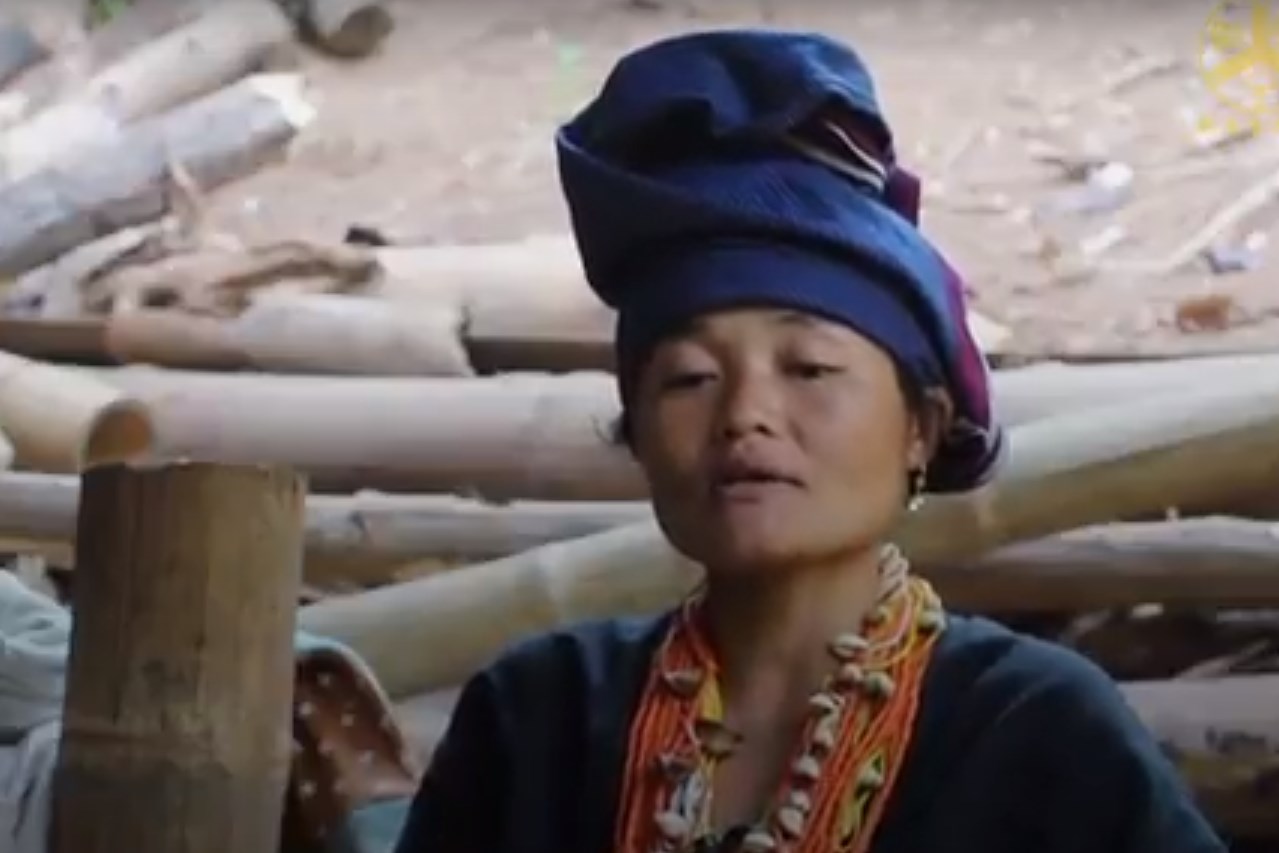
Saw O Moo was survived by his wife Naw Paw Tha (pictured above) and 7 young children. This photo is a screenshot of the film “Saw O Moo: Defender of Indigenous Karen Territories, the Environment and Way of Life,” presented at the commemoration event on May 5.
Concluding comments: Paul Sein Twa’s message
I think the message that I want to stress and reiterate is that the local people really want peace. They want peace; they don’t want the [Burma] Army to stay on their land and increase [troops]. So, the simple message is that if the [Burma] Army leaves from their territory and their villages, the people will go back and farm peacefully. They don’t want any compensation money from the Tatmadaw / Burma Army or the government. They just want to live in peace, do the things they initially did in the past, and live their way of life.
During the ceasefire negotiations for the preliminary bilateral agreement signed in January 2012, KNU requested the Burma Army to withdraw from 17 bases – among them Kay Pu and Ler Mu Plaw (between which the army is attempting to build the strategic military road) – so that Karen IDPs could start returning and rebuilding their lives. Since 2012, the Burma Army response has been to reinforce their troops and increase their military activity in the area. According to the KPSN report, between 2012 and 2017, Burma Army camps in Mutraw District increased from 65 to 78, and existing battalions were reinforced, for example by re-building camps out of concrete (which were built out of temporary materials such as bamboo before the ceasefires). Increased militarisation of ceasefire areas coupled with attacks against civilians have dashed Karen people’s hopes for peace and destroyed any trust in the Burma Army. KNU representatives and civil society groups in Karen State’s Mutraw District have repeatedly urged Burma Army troops to withdraw from Mutraw in 2017 and again in 2018. IDPs have also held demonstrations, calling Burma Army to withdraw so that they can return to their homes.

